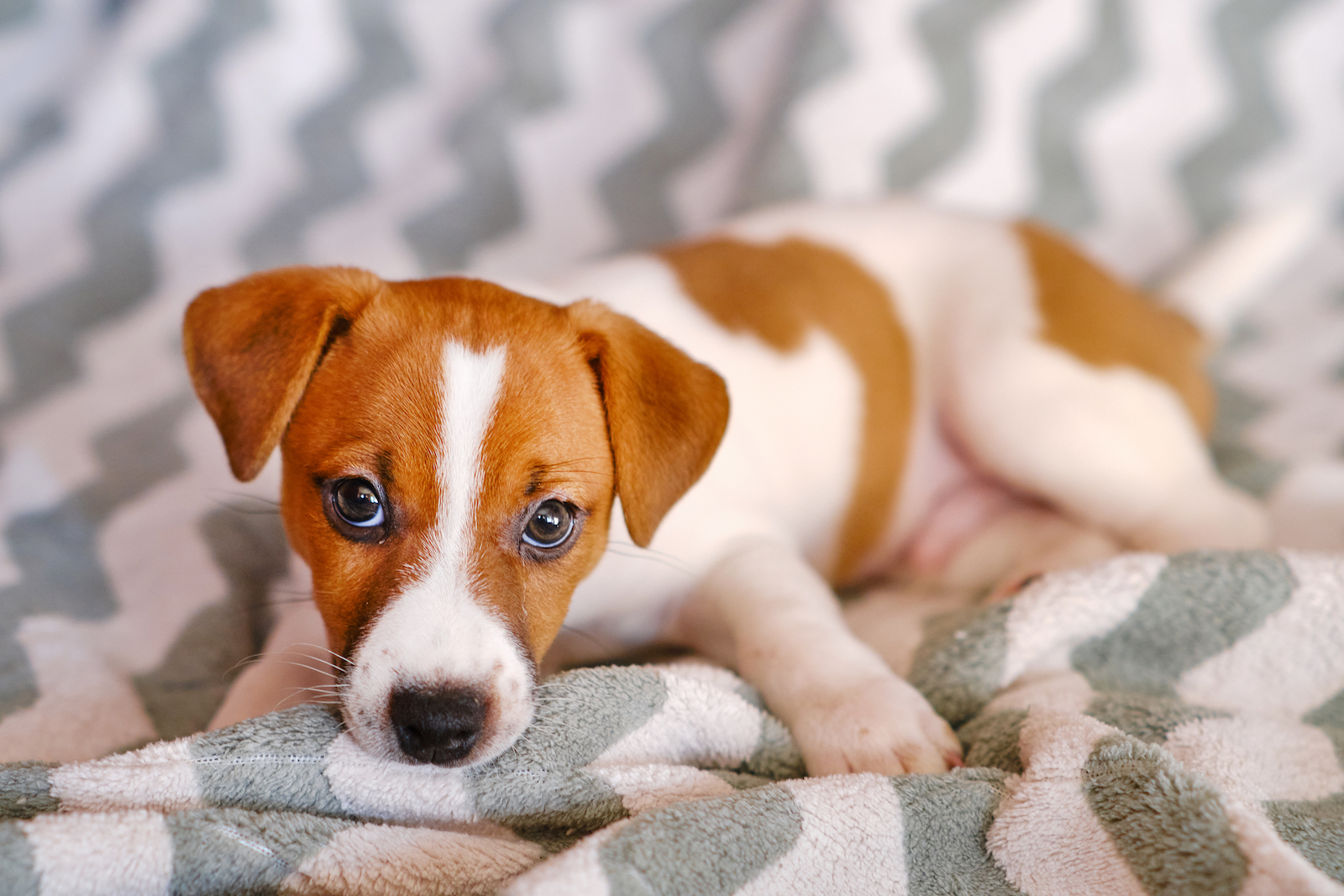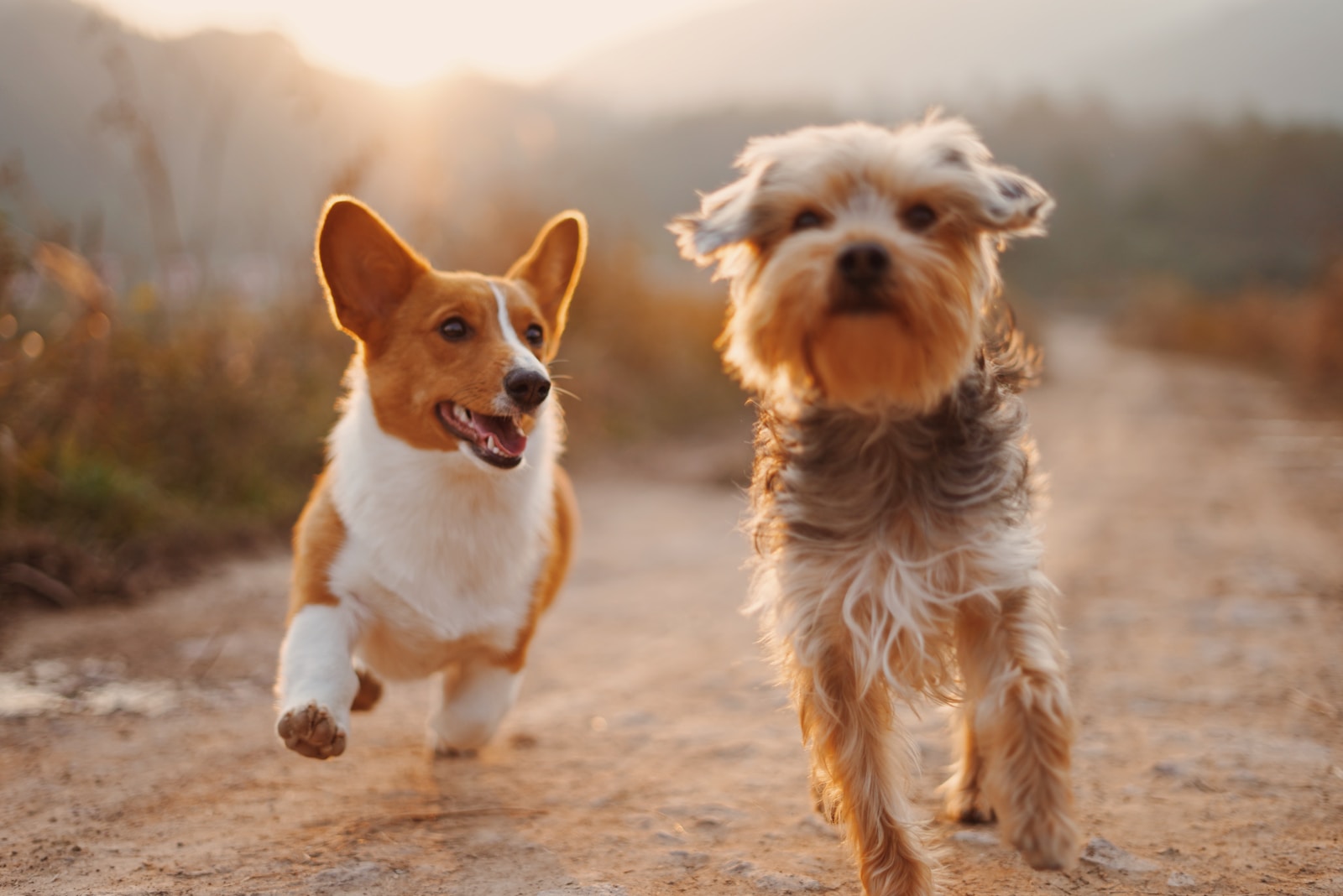After a few weeks of being the most adorable and lovable puppy in the world, your furball may start to develop some less-than-ideal habits. Maybe they’re chewing on your favorite pair of shoes or rawhide again. Or maybe they’ve started gnawing on your furniture. You see, your pooch is teething again…and it’s not so fun this time around.
Puppies have baby teeth beginning to grow at about six weeks old, but the process can take up to another two months after that. Even after all of their permanent teeth have come through, puppies will keep growing new baby teeth until they are somewhere between 12 and 18 months old.
Teething comes with a range of symptoms: Your puppy will probably become more anxious, restless and even aggressive as those pearly whites push through their gums. Here are 5 ideas to help your puppy with teething:
Give Your Puppy a Safe Chew Toy
Puppies will chew on anything they can find, so it’s a good idea to keep lots of safe chew toys around the house. If you know your pup likes to chew on plastic, you can buy special chew toys made of plastic that are safe for puppies to chew on. Teething puppies will often chew on fabrics, so you’ll need to keep your shoes, furniture, and other fabrics out of reach to prevent them from being damaged. You can also try giving your puppy a bone to chew on that is not made of fabric.
Have Plenty of Chew Toy Options Around The House
There are so many toys on the market today that are specifically designed to keep your puppy’s teeth and gums healthy while preventing destructive chewing habits. There are toys that are designed to encourage chewing, and there are others that are meant to keep your puppy’s mouth busy while they destroy less-important items. For example, many dogs enjoy a game of tug-of-war with an appropriately sized rope toy. Some dogs also prefer toys that they can shake around. If your puppy is a chewer, you should have a variety of toys with different textures around the house so that your pup has an appropriate toy for each situation.
Try Frozen Toys or Frozen Fruit For Your Puppy
When your puppy is teething and chewing on everything, sometimes having a frozen toy at the ready can be a lifesaver — especially when all of your shoes are out of reach. There are a variety of frozen toys designed for teething puppies, or you can make your own frozen treats from items like apples or bananas. Frozen treats are great for puppies of any age. As long as you don’t leave them out for too long, your puppy will be able to eat them without getting sick. Frozen treats are great for keeping teeth and gums healthy because they stimulate blood flow to the area, and they are cold enough to help soothe the pain caused by teething.
Play With Your Puppy
If your puppy is in pain and restless, play time might not be at the top of your list of things to do. However, this is the perfect time to engage in some rough and tumble play with your furball. Playtime can help ease your puppy’s pain and keep them from chewing on anything they shouldn’t. It’s important to engage in playtime with your puppy, even if they are teething. You don’t want them to think that you’re giving them a free pass to destroy your house just because they’re in pain. There are many ways to play with your puppy, but some of the best ways are to play fetch, tug-of-war, or engage in a game of chase and catch. You can even engage in some baby-appropriate wrestling. It’s important to remember that, as the adult, you’re in charge of initiating playtime. You should never chase your puppy around the house or try to initiate rough and tumble play if they don’t seem interested.
Keep Your Puppy Safe
If your puppy is teething and they have access to dangerous items, it’s important to keep them away from them. Anything that can easily break or be chewed through should be kept out of reach, such as electrical cords, remotes, and your phone charger. Teething puppies should also not be left alone unsupervised around small children, small animals, or other animals they may feel threatened by. If your puppy is in pain, they may act out more aggressively, which could cause a lot of damage if they are left unsupervised. If you notice that your puppy is particularly restless, has a runny nose, or is chewing on everything in sight, it’s best to keep them in a crate or out of the way where they can’t cause any damage.
Conclusion
Teething is a stressful time for puppies, and it can be stressful for their owners, too. With a few simple strategies, however, you can help your puppy with teething and keep your house in one piece at the same time. Teething is a natural part of puppy development, but it can be challenging for both you and your pooch. There are a few things you can do to help your puppy cope with the discomfort of teething. Give your pup plenty of chew toys, try frozen toys or frozen fruit, play with your pup, and keep your puppy safe.



